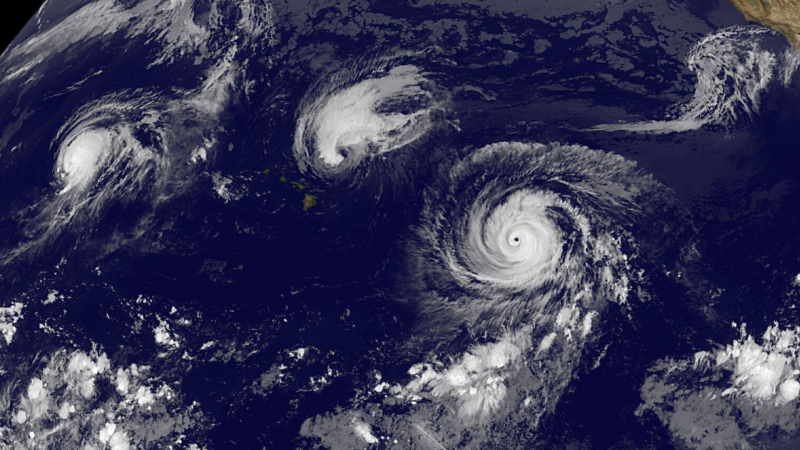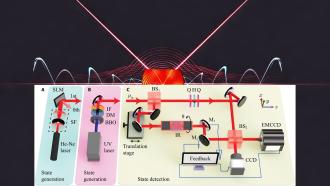
To understand an extensive, complex physical system, thinkers break it up into smaller components and try to understand the properties of the most minor microscopic components. This method helps us understand many complicated things around us, and has helped us solve a lot of real-world problems. But it does not help us understand certain phenomena, such as turbulence in fluids. A different way of thinking, a method that considers the physical system as a whole is needed in such cases. This method is called the multiscale analysis.
Breaking up a system into smaller components is called reductionism. All matter around us is made of atoms, and atoms are made of electrons, protons, and neutrons. The properties of a substance depend basically on the arrangement of electrons in the atoms and molecules. In chemistry, we can find out the characteristics of a compound by knowing the arrangement of the electrons. In the field of medicine, we believe that drugs act on the cells of the body at the molecular levels. Thus, understanding this interaction helps us design medicines.
Encouraged by the success of reductionism in the fields of physics, chemistry and medicine, some scientists argue that all the physical phenomena in the universe can be explained based on microscopic theories of science, namely particle physics. They refer to this futuristic theory as the theory of everything (TOE), final theory, ultimate theory, or master theory. This idea has many champions and supporters, but it also has critics who argue that not all physical phenomena can be explained based on its microscopic units. For example, we describe an atmosphere in terms of winds and clouds, rather than using electrons and protons that constitute them. Similarly, music cannot be explained solely in terms of musical notes, the paintings in terms of light reflected from them and the poetry in terms of the alphabets.
In this article, we illustrate how reductionism is not sufficient to explain the properties of turbulence. We show that to understand turbulence we need a multiscale description, rather than focussing on the molecules that make the fluid. In multiscale description, we attempt to describe the properties of the system at all scales, from minute to massive.
Water distribution is a beautiful example of a multiscale system. A river may receive water from a glacier. After travelling some distance, the river feeds water to a city via large pipes. From large pipes, the water is transferred to localities using relatively smaller pipes, which then supply water to homes. Finally, water reaches several parts of a house via even smaller pipes. We can treat the diameters of many pipes at various stages of the supply as different length scales. Here, the water flows from the largest scale (river) to the smallest scale (inside the home) in a hierarchical manner.
Stirred coffee is an example of a turbulent flow. The stirring by the spoon provides energy to the coffee and creates a large-scale vortex (rotating flow structures). The size of the largest structure is that of the cup. Smaller vortices are formed from the large vortex. The energy supplied to the large vortex goes down to smaller vortices, and finally, it reaches the molecules, where it dissipates as heat. Thus, in the coffee cup, the kinetic energy supplied by the spoon is transferred to the thermal energy of the molecules. The scale-by-scale energy transfer in the coffee is called energy cascade, which is denoted by ε. See Figure 1 for an illustration.

Figure 1: Blue blobs represent vortices of different sizes. The arrows represent energy transfers from large vortices to smaller vortices. The kinetic energy of small vortices is finally transferred to the thermal energy of the molecules at micro-scales.
In a snapshot of a turbulent flow illustrated in Figure 2, we observe vortices of multiple sizes. For example, the three green squares in the figure enclose vortices of very different sizes. These multiscale vortices participate collectively to generate the energy transfers. These energy transfers cannot be easily addressed in terms of molecules, even though molecules form the fluid.

Figure 2: A snapshot of a turbulent flow. The green boxes indicate three vortices of very different sizes.
The coffee cup contains fluid vortices of many sizes (see Figures 1 and 2). Hence, it is a multiscale system. In 1941, A N Kolmogorov showed that the velocity of the vortex of size l varies as a cube root of εl, or u_l ~ (εl)^1/3. Thus, the flow velocity in a turbulent flow is scale-dependent; bigger vortices have larger speeds compared to smaller eddies. It is important to note that, using molecular-level analysis, we cannot obtain the insight about different flow velocities in the different sized vortices.
Several physical systems exhibit multiscale behaviour. Few examples are planetary and stellar atmospheres, the human body, crack propagation, earthquakes, music and financial systems. Earth’s atmosphere receives energy from the Sun at large scales. This energy drives turbulence in the atmosphere and oceans. The turbulent energy is finally converted to heat at microscopic scales. In the human body, nutrients travel from the intestine (large scale) to various organs, and finally to cells, where they are burnt to produce energy. Similar multiscale energy transfer takes place in earthquakes and crack propagation. Thus, many of these systems have some similarities with turbulence.
Going ahead, we will widen our discussion on how multiscale systems work.
This article is a part of the series “Importance of multiscale description in science” by Prof. Mahendra Verma, Department of Physics, Indian Institute of Technology, Kanpur






